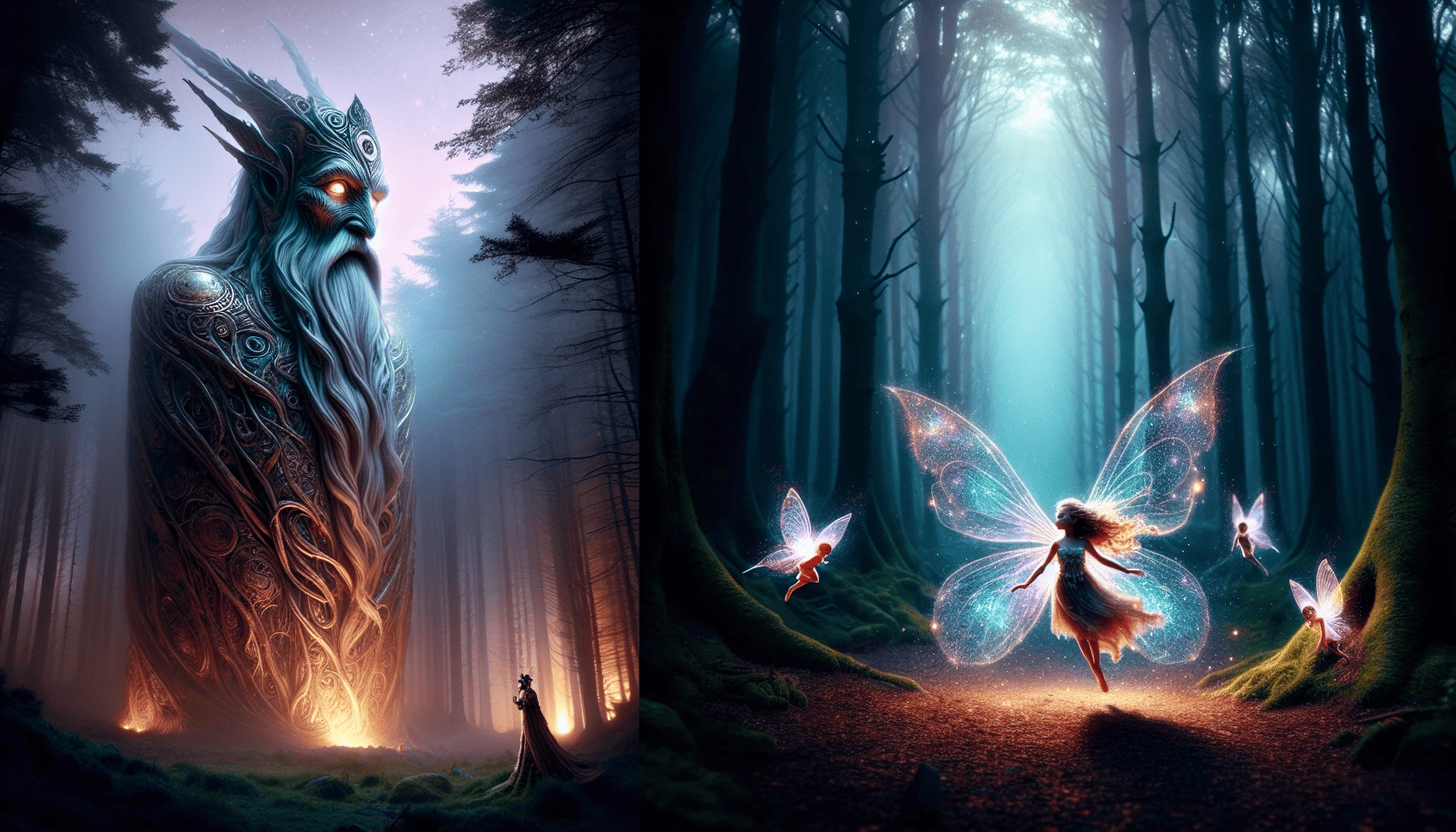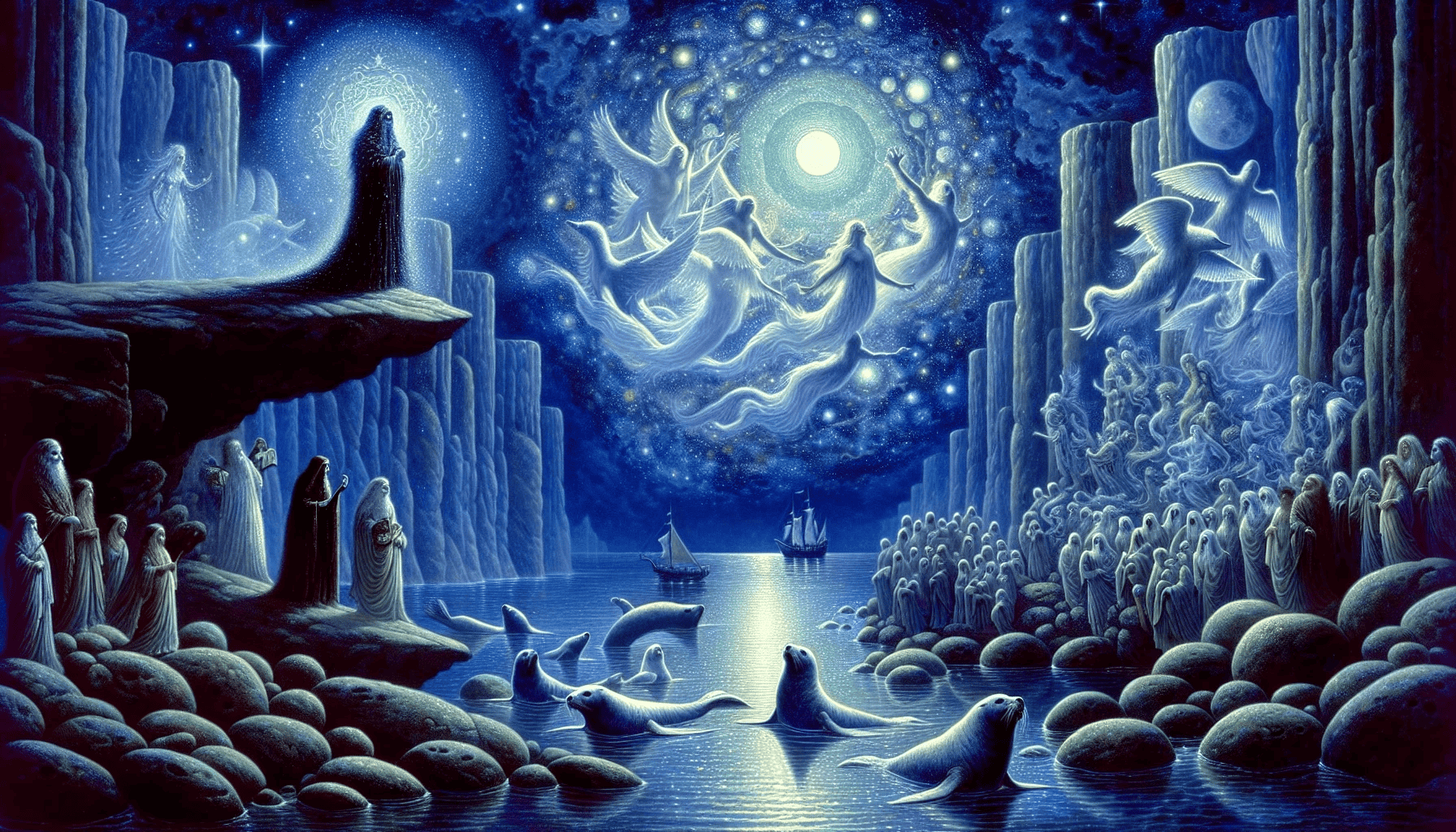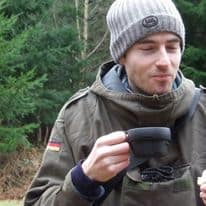Welcome, fellow explorer, to an enchanting journey through the captivating world of Irish mythological creatures! Prepare to be spellbound as we uncover the rich history of Ireland’s supernatural beings and legends, diving into tales of faeries, vampires, shape-shifters, and more. Are you ready to embark on this mystical adventure?
Key Takeaways
Explore the captivating world of Irish mythology and its enchanting creatures.
Discover powerful Aos Sí fairies, mischievous lone fairies, iconic leprechauns, shape-shifting Púca & Selkies and more!
Uncover legends of fearsome fiends like Dullahan & Abhartach as well as guardians & protectors such as Enbarr and Clíodhna.
The Alluring World of Irish Mythology

Ireland’s emerald isle is teeming with Irish mythical creatures and supernatural beings that have captured the imaginations of generations. From the mischievous Leprechaun with his pot of gold to the eerie wailing of the Banshee, these fascinating creatures have long been an integral part of Irish folklore and Celtic mythology. The Emerald Isle’s myths and legends are filled with supernatural creatures, like the Aos Sí, the descendants of ancient gods, and the cunning vampire Abhartach, who roamed Northern Ireland at night, terrorizing its inhabitants. Among these beings, one can find the captivating Irish mythological creature that adds to the rich tapestry of Ireland’s legendary history.
The earliest Irish mythologies date back to the ancient Celtic period, with the mythology of the Tuatha Dé Danann, a supernatural race that includes various Irish mythology creatures, also known as celtic creatures. These captivating tales have been passed down through generations, inspiring literature, art, and music in both Ireland and beyond. With that said, it’s time to immerse ourselves in the captivating tales of Irish mythological creatures.
The Importance of Irish Mythology
Irish mythology has long held a significant place in the hearts and minds of the Irish people, shaping their Irish culture and influencing the arts. These ancient tales have served as a source of inspiration, a connection to the past, and a way to preserve the rich history of Ireland.
From the trickster Bodach, believed to be the father of the Banshees, to the Gancanagh, a fairy with a reputation for seducing women, these captivating stories continue to resonate with the Irish people and captivate audiences worldwide.
Bewitching Faeries: Aos Sí and Lone Fairies

In Irish mythology, fairies hold a distinct position, with stories of both Aos Sí and lone fairies engaging generations. The Aos Sí, descendants of ancient gods, are powerful and majestic beings, while lone fairies, like the iconic Leprechaun and the headless Dullahan, are smaller, mischievous tricksters. Let’s examine these captivating fairies and their intriguing tales.
Aos Sí: Descendants of Ancient Gods
The Aos Sí, a supernatural fairy race in Ireland, are believed to be the descendants of the ancient gods known as the Tuatha Dé Danann. These majestic beings are deeply embedded in Irish mythology and make their homes in magical fairy mounds and enchanting woodlands.
The Aos Sí are known for their protective nature, and they can take on beautiful or grotesque forms. They are easily offended, and if a human crosses them, they may seek painful revenge.
Lone Fairies: Small and Playful Tricksters
In contrast to the Aos Sí, lone fairies in Irish mythology are known for their mischievous and playful nature. Examples include the Leprechaun, a tiny cobbler dressed in green, and the Dullahan, a headless horseman who foretells death. These tricksters often inhabit untouched natural spaces, such as forests and meadows, and are said to travel between our world and the Otherworld through places like lone hawthorn trees, burial grounds, and bodies of water.
With their whimsical ways and supernatural powers, lone fairies, often embodying the essence of a female spirit, have long captivated the imaginations of those who cross paths with them.
Leprechauns: Ireland’s Iconic Imps

Leprechauns, those mischievous, wish-granting imps, are undeniably one of Ireland’s most iconic mythological creatures. Known for their tiny stature, green attire, and a penchant for hiding pots of gold at the end of rainbows, these impish beings have captured the hearts and imaginations of people around the world.
We’ll examine the folklore, traditions, and popular culture related to Ireland’s cherished Leprechaun.
Leprechaun Legends and Lore
The earliest legends of the Leprechaun can be traced back to the 8th century when tales of water spirits called “luchorpán” or “small body” were first told in Ireland. Depicted as little old men with beards, wearing green clothes, and buckled shoes, Leprechauns are solitary creatures, often linked to shoemaking and gold hoarding.
While they are known for their mischievousness and sharp wit, it is their ability to grant three wishes that truly sets them apart, making them a fascinating part of Irish mythology.
Leprechauns in Popular Culture
From the silver screen to cereal boxes, Leprechauns have become a staple in popular culture. Movies like the “Leprechaun” film series and TV shows such as “Bewitched” and “Charmed” have showcased these impish beings, often portraying them as cunning and mischievous tricksters. The Notre Dame Fighting Irish football team and the beloved Lucky Charms cereal mascot have further cemented the Leprechaun’s place in popular culture, demonstrating the enduring appeal of these iconic Irish mythological creatures.
Shape-shifters and Enchantresses: Púca and Selkies

Irish mythology, a branch of Celtic mythology creatures, is filled with tales of shape-shifters and enchantresses, such as the mysterious Púca and the captivating Selkies. The Púca, a master of disguise, can take on various animal forms, while Selkies transform between seal and human forms.
Let’s examine in detail the myths surrounding these mystical beings.
Púca: Master of Disguise
The Púca is a shape-shifting trickster spirit in Celtic folklore that can take on the form of various animals such as:
horses
goats
cats
and more
The origins of the Púca are unclear, but some sources suggest it might have been influenced by the Norse word “púki,” meaning imp.
The Púca is known for:
bringing both good and bad fortune
communicating with humans through speech
its enigmatic nature
its shapeshifting abilities
These characteristics make the Púca a captivating figure in Irish mythology.
Selkies: Seal-Human Transformations
Selkies are mythical sea creatures that can transform between seal and human forms by shedding their seal skins. These enchanting beings are found in both Irish and Scottish folklore and are often depicted as beautiful women or handsome men in their human forms.
Stories of Selkies typically involve themes of love, longing, and transformation, capturing the hearts of those who encounter their tales.
Fearsome Fiends: Dullahan and Abhartach

While Irish mythology is filled with enchanting creatures, it is also home to some truly fearsome fiends. The terrifying headless horseman Dullahan is a harbinger of death, while the bloodthirsty vampire Abhartach stalks the countryside in search of victims.
Let’s unravel the grim tales of these sinister beings from Irish folklore, including some fascinating celtic folklore creatures found in Irish folk tales, such as the mysterious Irish folklore creature and other captivating Irish folklore creatures, all while exploring the significance of an Irish word or two.
Dullahan: The Headless Horseman
The Dullahan is a headless rider on a black horse, often wielding a human spine as a whip. This fearsome figure is believed to be the embodiment of the Celtic god Crom Dubh and is associated with dark and eerie tales in Irish mythology.
People believe that the Dullahan is a harbinger of death, capable of calling a person’s soul to the afterlife just by saying their name. The Dullahan’s chilling presence continues to haunt the imaginations of those who hear its tales.
Abhartach: Ireland’s Vampire Legend
The legend of the bloodthirsty vampire Abhartach dates back to the 5th century in Derry, Ireland. This evil dwarf roamed the countryside at night, drinking the blood of his victims and spreading terror. Many people believe that the story of Abhartach is real, and his dark legend has become intertwined with the modern myth of vampires.
The chilling tale of Abhartach serves as a stark reminder of the darker side of Irish folklore.
Guardians and Protectors: Enbarr and Clíodhna
In the rich tapestry of Irish mythology, there are also guardians and protectors who stand out as powerful and awe-inspiring figures. Enbarr, the wondrous horse, and Clíodhna, the beautiful yet fearsome Queen of the Banshees, embody these protective qualities.
Let’s reveal the engaging tales of these mythical beings.
Enbarr: The Wondrous Horse
Enbarr, known as “Enbarr of the Flowing Mane,” is a magnificent and magical horse in Irish mythology, associated with the Celtic sea god Manannán mac Lir. Enbarr possesses the ability to run across both sea and land without touching either, making it a truly remarkable creature. Its enchanting tales of speed and grace have inspired generations, including J.R.R. Tolkien, who based the character of Shadowfax in “The Lord of the Rings” on Enbarr.
Clíodhna: Queen of the Banshees
Clíodhna, an ancient sovereignty goddess in Irish folklore, is associated with:
beauty
love
healing
dreams
music
the sea
As the Queen of the Banshees, Clíodhna is both beautiful and fearsome, with the power to grant wishes. Her enchanting tales have captivated the hearts of those who have crossed paths with her, making her a beloved figure in Irish mythology.
Changelings: Fairy Swaps and Human Abductions
Changelings are a fascinating aspect of Irish mythology, involving tales of fairy babies swapped with human infants. These stories often reflect the struggle for survival in pre-industrial Ireland and the influence of supernatural beings on human lives.
Let’s examine the myths and tales of these intriguing changelings.
Changeling Legends and Tales
In Irish mythology, changelings are believed to be fairies who take the place of a human child or baby that they’ve stolen. These tales typically revolve around the struggles of the human parents in dealing with the changeling child. The fairies are said to take away the human infant and leave behind their own, usually a sickly or mischievous fairy child, which often causes suffering and distress for the parents.
Changeling legends serve as a reminder of the power and mystery of the supernatural world in ancient Ireland.
The Role of Changelings in Irish Folklore
Changelings in Irish folklore were believed to impact human lives in various ways. They were thought to be sent by fairies to steal human children and leave their own kind in their place, causing mischief, illness, or misfortune in the household. This belief reflects the hardships faced by families in pre-industrial Ireland and the influence of supernatural forces on their lives.
The legends of changelings serve as a testament to the enduring power of Irish mythology and the human imagination.
The Wild Hunt: Sluagh and the Restless Dead
The Wild Hunt, a chilling phenomenon in Celtic mythology, is closely associated with the restless spirits of the dead known as Sluagh. These eerie beings are said to seek out the souls of the recently deceased, adding a dark and foreboding element to Irish folklore.
Let’s examine the myths surrounding the Wild Hunt and its relationship with the Sluagh spirits.
Sluagh Origins and Characteristics
The Sluagh are believed to be the souls of the unforgiven dead, who were not allowed entry into either heaven or hell. They wander the earth as restless spirits, seeking to steal the souls of the recently deceased. Often described as a horde or crowd, the Sluagh are characterized by their flapping wings, screeching sounds, undulating shadows, and haggard, thin appearance.
The Sluagh’s dark and unsettling nature continues to haunt the imaginations of those who hear their tales.
The Wild Hunt in Celtic Mythology
The Wild Hunt is a cultural phenomenon in Celtic mythology, usually depicted as a group of spectral riders led by a mythological figure, such as Fionn or Wōden. This haunting procession is often seen galloping across the countryside or the sky at night, with the Sluagh spirits in tow.
The Wild Hunt symbolizes natural death and regeneration, serving as a chilling reminder of the darker side of Irish folklore and its connection to the restless dead.
Summary
As we conclude our journey through the enchanting world of Irish mythological creatures, it’s clear that these captivating beings have left an indelible mark on Ireland’s rich folklore and cultural identity. From the powerful Aos Sí and mischievous lone fairies to the fearsome Dullahan and bloodthirsty Abhartach, the tales of these magical creatures continue to resonate with audiences and inspire new generations. May the enchanting world of Irish mythology continue to captivate and bewitch the hearts and minds of all who cross its path.
Frequently Asked Questions
What is the Celtic trickster animal?
In Celtic folklore, the fox is often depicted as a trickster animal, outwitting other creatures and humans alike. The pca is also seen as a shape-shifting trickster, capable of transforming into various forms such as a horse, cat, rabbit, raven, wolf, goat, or dog. Both the fox and the pca are symbols of cleverness and cunning, representing the ability to navigate difficult situations and come out triumphant.
What is an Irish selkie?
Irish selkies, or the seal people, are legends of half-fish and half-human creatures who can shed their skin to take on human form when on land. In the water, they remain as seals.
What are Irish legends called?
Irish legends are known as the Mythological Cycle, Ulster Cycle, Fenian Cycle, and Historical Cycle – each set in a different time period with varying characters and tales.
Who are the giants in Irish mythology?
The giants in Irish mythology are the Fomorians, who are portrayed as malevolent spirits living under the sea or in deep recesses beneath the Earth’s surface. They were known to conduct sea raids against land-dwelling populations and featured prominently in Celtic folklore.
What is the mythical beast of Ireland?
The mythical beast of Ireland is the leprechaun, a solitary fairy in green garb known to hide pots of gold at the end of rainbows and often associated with Irish culture. They are popularly considered as bringers of good fortune, though they can also be mischievous.

